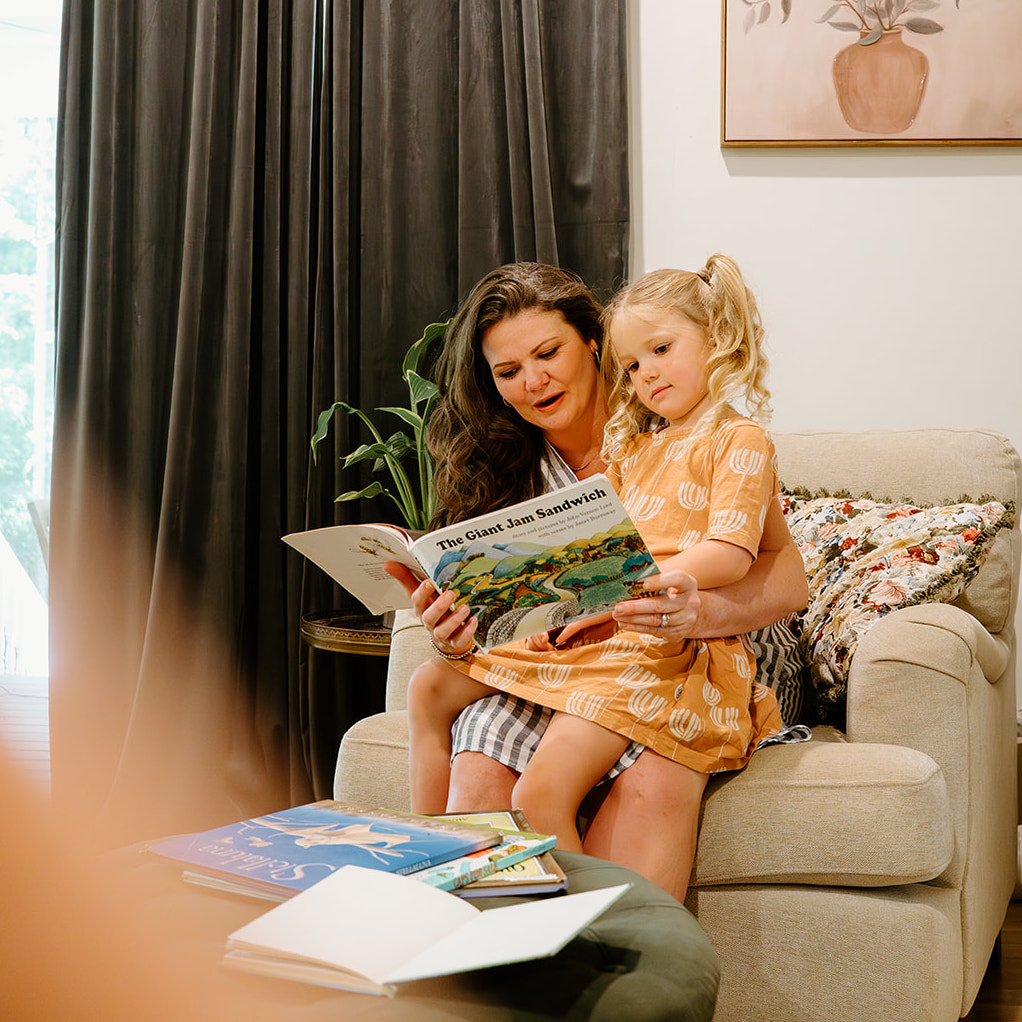Kindergarten is such a sweet and special time for children. It is an age where little children begin to grow and develop a love of learning. Many are entering the world of formal learning and academics for the first time.
You have decided you want to homeschool your kindergartener, but where do you start?
In this blog post I am answering all of your questions about how to homeschool kindergarten. My goal is to answer all of your questions – big or small – so you walk away feeling encouraged and confident that you can do this. I am sharing practical tools and curriculum choices so you will be on your way to an intentional year or learning with your child.
In this blog post:
- Top questions about homeschooling kindergarten
- Five intentions for preschool and kindergarten
- How do I legally homeschool my child?
- What academic subjects should we cover in kindergarten?
- Do I include beauty subjects and nature study during kindergarten?
- How many hours a day does homeschool kindergarten take?
- What curriculum do you use for your child’s kindergarten year?
- Early learning resources from Treehouse Schoolhouse
Top questions about homeschooling kindergarten

Here are some of the top questions I get asked about beginning homeschooling and specifically homeschooling kindergarten:
- How do I legally homeschool my child?
- What academic subjects should we cover in kindergarten?
- How many hours a day does homeschool kindergarten take?
- What curriculum do you recommend/are you planning to use for your child’s kindergarten year?
I will answer all of these and more in this blog post. If you are brand new to homeschooling, this blog post shares seven clear steps to getting started including educational philosophies, the legal side of things, and more.
Before I go much further, I want to be super clear about one thing. Kindergarten is such a big deal in public education. I know it can feel like this monumental occasion and that you need to have all of your ducks in a row, hit a bunch of benchmarks, and so on and so forth.
Let me let you in on a little truth: Homeschool kindergarten should be viewed as an invitation to learning and as a stepping stone into formal education. What does that mean? It means that formal lessons shouldn’t be forced at this age. It also means that everything you do with your child this kindergarten year should be an intentional step toward the following years of formal schooling.
Before getting caught up in curriculum choices and academics, I would suggest focusing on these five goals as top priority, and then adding some structured invitations to learning if your child is showing interest.
For a more in-depth conversation, watch this video below:
Five intentions for preschool and kindergarten

Here are the most important things to me during the kindergarten year:
- A deep love for living literature
- Unstructured, creative play
- Obedience and the ability to pay attention
- Practical life skills
- Exploration and experiences in the outdoors
How do I legally homeschool my child?
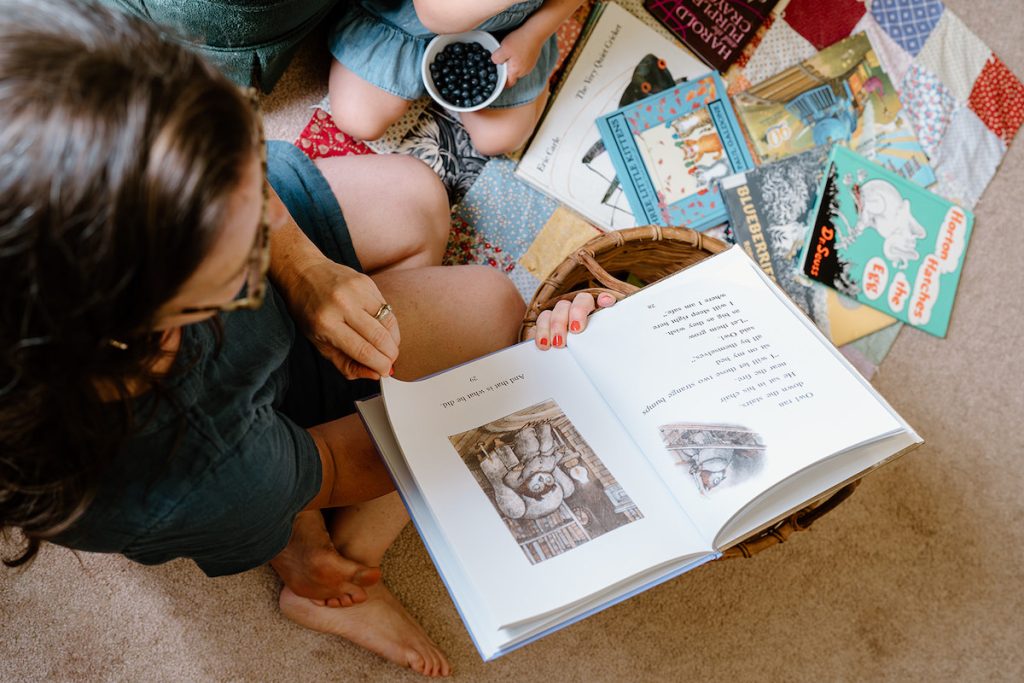
Homeschool laws are regulated by each state, so you need to know what the local law requires of you and your child. Some states require a certain number of college credits from the parent who will be teaching them while others require a high school diploma. Most states will require that you officially declare your intent to homeschool and possibly name your school. Some states require attendance tracking, yearly testing, and/or a teacher’s evaluation. Some states have virtually no requirements at all. You can find out about your state’s requirements here.
What academic subjects should we cover in kindergarten?

If you are ready to introduce some academics to your child, I recommend starting with these four subject areas for their kindergarten year:
- Math
- Handwriting and copywork
- Phonics and reading
- Literature that touches a variety of topics (Bible, history, science, nature)
Don’t try to fit in geography or history lessons, fret about grammar, or memorize facts at this age. This is a year for easing in. It’s a year to cover the basics, enjoy some reading, and spend most of the day in play!
Do I include beauty subjects and nature study in kindergarten?
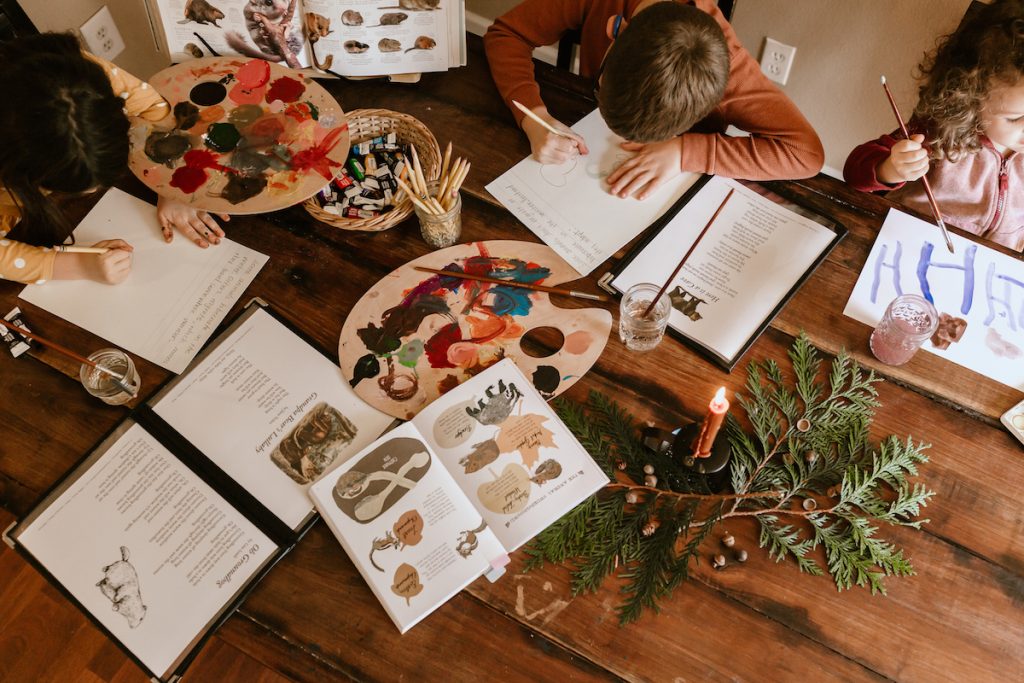
While it could be optional at this age, I have found so much value in incorporating subjects like Scripture, music, art study, poetry, and nature study into our home education, starting very young. Children are worthy of being exposed to truth, goodness, and beauty and it’s never too early to start. My children absolutely love the music, hand rhymes, poetry, projects, art, and more from Treehouse Nature Study, Primary Years.
Treehouse Nature Study, Primary Years can be used as the core curriculum for preschool or kindergarten. It’s so much more than nature study and includes copywork, living books, and opportunities for writing through notebooking.
How many hours a day does homeschool kindergarten take?
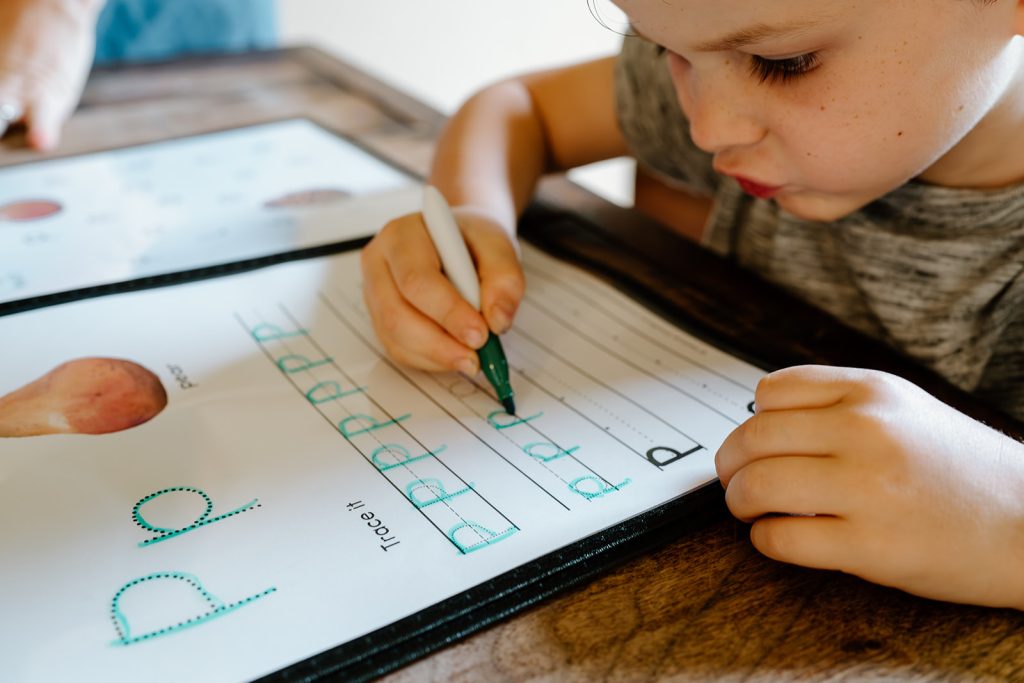
I recommend short “sit-times” at this age, and spread them out throughout the day. Find a curriculum that is enjoyable for both you and your child and that has short, manageable lessons. Math, handwriting, and phonics shouldn’t take more than 30 minutes to an hour in total. Reading aloud varies depending on the interest and the attention span of the child.
If you choose to add in art projects, nature study, and other hands-on activities like that you may spend another hour each day. To me, all of our day is learning, so it’s hard to put a timeframe on it. In an effort to give a straight answer though, I will say homeschool kindergarten should take 30 minutes to two hours a day, four to five days a week.
For a peek into our daily rhythm with a kindergartener, watch this video below:
What curriculum do you recommend for your child’s kindergarten year?
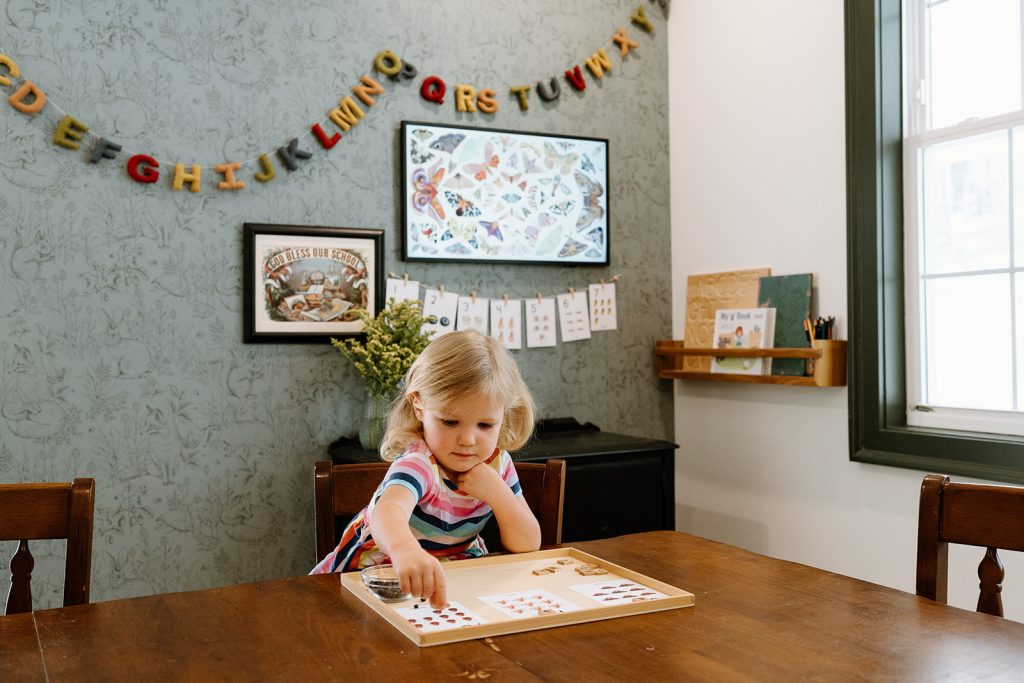
Here are my recommendations for homeschool kindergarten curriculum, based on what I have used or researched personally. These are all good picks, but the ones with the asterisks are the ones we are personally choosing to use with our son who is turning 5 in August this year.
Math
We are choosing to use Simply Good and Beautiful Math K because it is full of color and games, which is a perfect opportunity for connection and will make a fun transition into formal schooling. We plan to switch to Math-U-See next year for first grade.
Handwriting and copywork
- Wonder of Nature Collection
- Handwriting Without Tears – My First School Book or Kick Start Kindergarten*, depending on starting ability
- Copywork from any selection of Scripture, poetry, or excerpts from books*
- Morning Time calendar, weather, and name tracing*
We start each day with Homeschool Morning Time where we use the Morning Time Bundle to trace the day’s date and their name. We will work through the alphabet using the Wonder of Nature Collection, as well as practice letter formation using these hands-on strategies. As time goes on, we will add in copywork from Treehouse Nature Study, Primary Years poetry or other selections.
Phonics and reading
- Explode the Code* (read my review in this post: Curriculum Review: Explode the Code)
- ABC See Hear Do*
- Dash into Learning*
We will work through all of these resources over the course of the year as he grows in his interest and abilities.
Literature
Reading aloud often from good, quality living picture books and chapter books is enough, but if you want to tie in some fun learning activities with your reading, I recommend using a literature-based curriculum to help guide you.
- Treehouse Story School: Preschool (see how I adapt this curriculum for kindergarten)
- Sonlight
- Beautiful Feet Books
- Before Five in a Row and Five in a Row*
High quality book lists are essential for developing your child’s love for reading. I put together this booklist 100 Living Books for the Early Years with 100 selections of board and picture books, storybook collections and treasuries, poetry books your children will love, and novels that make great read-alouds for the younger years. We will also incorporate titles from the Ambleside Online Year 0 Book List.
I plan to incorporate books and activities from Before Five in a Row and Five in a Row. We will also read aloud many, many books from both book lists (and more) this year and give him opportunities for play-based narration as much as possible.
Early learning resources from Treehouse Schoolhouse
Treehouse Story School: Preschool

Treehouse Story School: Preschool is 32-weeks of gentle, literature-based curriculum designed for ages 2.5-5 years. This preschool curriculum that invites children to learn through the themes in stories they love. Each week will focus on a picture book, inviting children into connection and learning through music and movement, play-based narration, alphabet and number play, motor skills, practical life development, crafts, and baking together.
It would be a great fit for your toddler or preschooler if you are looking to incorporate multi-sensory, play-based learning while introducing them to timeless stories.
From toddler through upper preschool, this curriculum can be used year after year as you dive deeper into beloved, classic stories your family will cherish. Preview a free week here.
Daily Rhythm Bundle
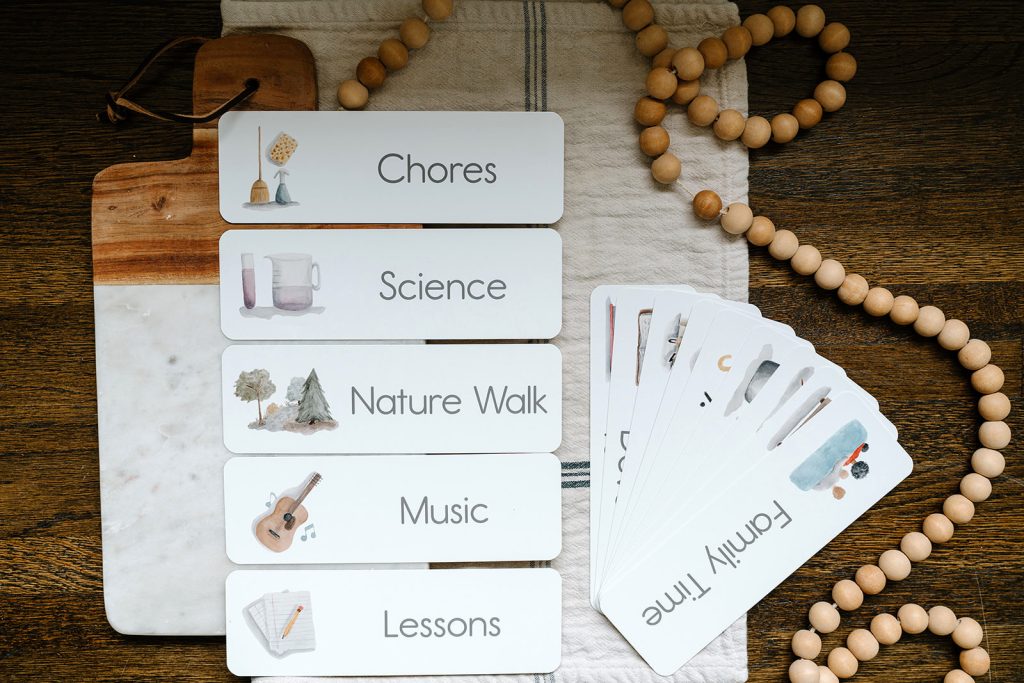
Children are highly visual–they can feel particularly out of control when they don’t know what to expect of their day. That’s why we recommend using a visual schedule to support your children from the time they are very young.
Rather than trying to stick to a rigid schedule, this set helps you create a general rhythm for your days. The daily rhythm worksheet is laminated and dry erase and the cards can be moved around offering you flexibility and adaptability.
Morning Time Bundle

This interactive, reusable set focuses on weather, seasons, moon phase, temperature, weather-appropriate clothing, date and time, and reading a calendar. With this daily bundle, your child will practice the skills of handwriting, tracing, copywork, and telling time. I recommend you print these materials and place them inside of a Morning Time Menu or dry-erase sleeve. Using dry-erase markers, your child can fill this bundle out over and over again.
We also offer a version of the Morning Time Bundle for those in our community who live in the Southern Hemisphere.
Wonder of Nature Alphabet Print Cards

The Wonder of Nature Alphabet Print Cards were designed to offer young children a multi-sensory invitation to recognizing letters. The watercolor illustrations that coordinate with each letter of the alphabet teach early phonetic awareness by introducing them to beginning letter sounds. These beautiful cards can be displayed in your school room or used for hands-on learning activities like matching, sorting, and reading. See the full Wonder of Nature Collection here.
I hope this post was helpful in answering some of the common questions about homeschooling your kindergartener. Ask any additional questions in the comments below!




